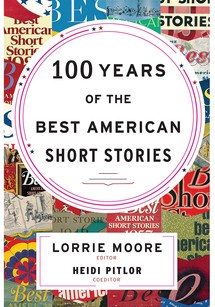Venturing into 100 Years of the Best American Short Stories is like entering a hallway lined with doors, and behind each is a tightly coiled tale just waiting to punch you in the gut. Short stories are dangerous that way. They startle. They shock. They illuminate. Which is why we keep going back for more.
The compendium opens in 1917 with Edna Ferber's acerbic character study of a lonely businessman trapped by a deathbed promise. From there we meet F. Scott Fitzgerald's boozy expatriates, the reticent patriarchs of William Faulkner, and John Cheever's married discontents. The post-World War II period delivers portraits of three oppressed groups—working-class women (Tillie Olsen), black musicians (James Baldwin), and assimilating Jewish immigrants (Philip Roth, obviously)—while the ensuing years give us the surreal exuberance of Donald Barthelme, unflinching depictions of sex and violence from Jamaica Kincaid and Mary Gaitskill, and the capitalist hellscapes of Sherman Alexie and George Saunders. Each story opens with biographical grist—the falling-out between Ernest Hemingway and Sherwood Anderson, how Mona Simpson is the daughter of a mink farmer and the first in her family to attend college—that will delight both dabblers and aficionados of the genre.
But what exactly is it that makes the form so ideally suited for truth telling? As Lorrie Moore, who edited the collection, observes in her introduction: "A story is a noise in the night...a dark corner that is either turned and gone around or fixed with a light in order to discover what is lurking there." And we are ready with our flashlights, adrenaline pumping, alert and alive.


